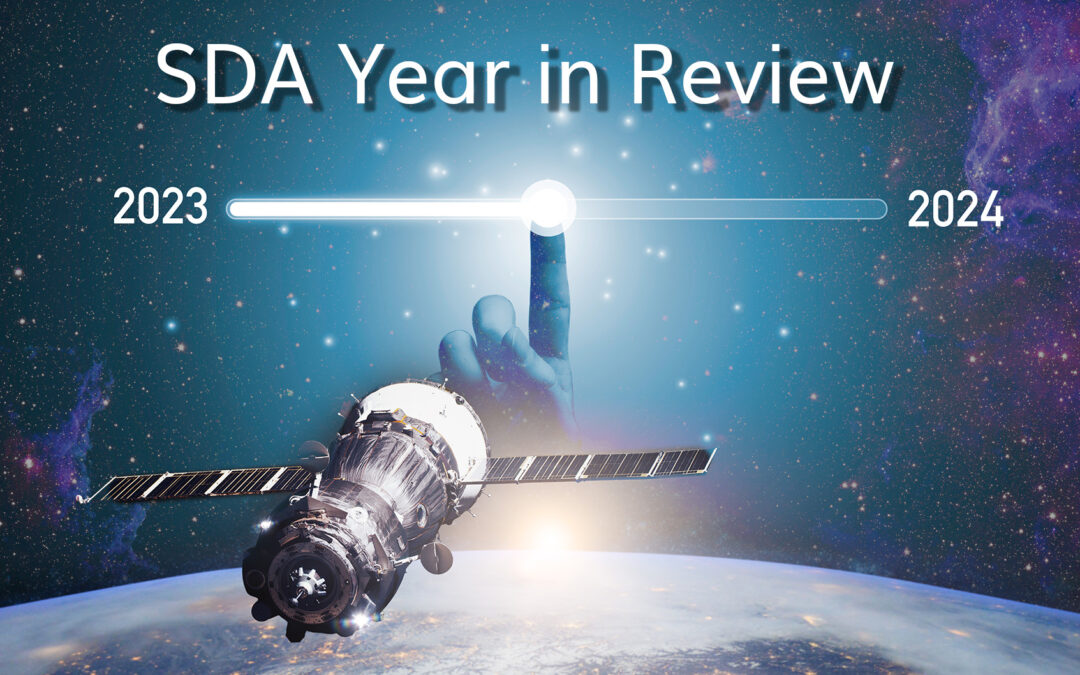2023 has been a year of intense discussion around Space Situational Awareness (SSA). Questions around the impact of Low Earth Orbit constellations and the increasing number of active satellites is creating an urgent need to address the challenges. Another near-miss at the beginning of 2023 involving two pieces of debris travelling within just six metres of each other, made the industry’s ears prick up. The ramifications of a collision would be catastrophic.
Industry Voices Concerns
But it certainly seems that the industry is also getting louder in terms of voicing its concerns about SSA. Anyone with satellite connections who has been scrolling through LinkedIn recently will see posts of concern over the situation in our orbits. It seems that, finally, some action is being taken at the legislative level.
In 2022, the FCC adopted a rule that requires satellite operators to dispose of their satellites within five years of mission completion. This year, the seriousness and weight of these regulations were noted by many space users when the FCC issued its first fine to an organisation for violating its anti-space debris rule. The organisation failed to dispose the decommissioned satellite to the required safe altitude and therefore fined $150,000.
In November, it was reported by Space News that the Republican leadership of the House Science Committee has introduced legislation that would create a mission authorization system for commercial space activities and alter plans for a space traffic coordination system.
ESA has also recently introduced its Zero Debris Approach aiming to ensure that the agency generates no new space debris in valuable orbits by 2030. In July, the UK announced its creation of a Space Sustainability Standard, which focuses on measuring and managing, improving satellite repair and retrieval, and instating broader regulatory reviews. It also highlighted that the UKSA and UK Space Command are developing a joint National Space Operations Centre with cutting-edge space domain awareness technologies at its heart to improve national space surveillance and tracking and space traffic coordination capability. In the last week, the UK Space Agency has offered £300,000 to map out the current state of research into the potential environmental impact of space debris re-entering Earth’s atmosphere.
Regulations surrounding deorbiting are clearly having an impact on operations; over 80% of constellation satellites launched in 2022 were inserted into orbits from which they will decay towards Earth in less than two years once they are no longer operational.
Of course, there are many satellites in-orbit which were launched prior to this legislation, and therefore without de-orbiting or reentry capabilities. In response to this problem, ESA launched a new method to deorbit such satellites in July. Its ESOC mission control team attempted a new method to assist the reentry of an older satellite which lacked reentry capabilities. The assisted reentry of ESA’s Aeolus satellite was successful, with it burning up over uninhabited regions of the Atlantic and Antarctica. This is huge progress when considering the impact of defunct satellites in-orbit, and the risk they pose to the environment.
Share Data to Protect the Space Environment
Concern also appears to be increasing in Space Traffic Management, with a new report from Research and Markets highlighting the forecast increase of the global Space STM market from a value of US$ 14,053.17 million in 2022 to reach US$ 26,341.3 million by 2030. After the ISS had to perform an avoidance manoeuvre to avoid space junk earlier this year, this surely has to be reassuring.
This year, governmental bodies have continued to make a shift to address STM. The US Government has recently provided updates on its STM plans, having announced the reintroduction of the Space Safety and Situational Awareness Transition Act of 2023. The act has established a civil SSA capability under the Department of Commerce (DOC), providing new congressional oversight to support spaceflight safety and space sustainability. This follows on from its pilot project at the beginning of the year in which NOAA’s Office of Space Commerce (OSC) partnered with the Department of Defense to award seven contracts to U.S. commercial space firms for space situational awareness data analysis.
In July, the EU Space Programme’s Space Surveillance and Tracking (SST) began operations to provide space safety services to more than 190 registered organisations. This new service contributes to the coordination of space traffic by protecting more that 400 satellites from the risk of collision.
Support the SDA in 2024
For many years, the SDA has called for united action for the sustainability of space. With the number of satellites in-orbit set to increase drastically, this continues to be an urgent need. As we see governments adopting more responsibility in regard to space debris prevention and management, it is equally important that they deploy a cohesive, multi-national approach to STM. Data sharing is at the core of STM, and governments must prioritise creating a system in which data can be pooled in order to improve our industry’s visual of the STM landscape. We hope that the work completed as part of the DOC’s pilot project, alongside the conversations had with other organisations this year will ensure that we see strong future collaboration between government and commercial operators for improved safety of flight for the entire community.

